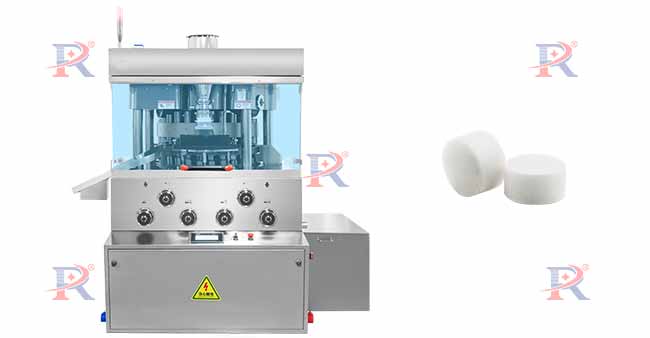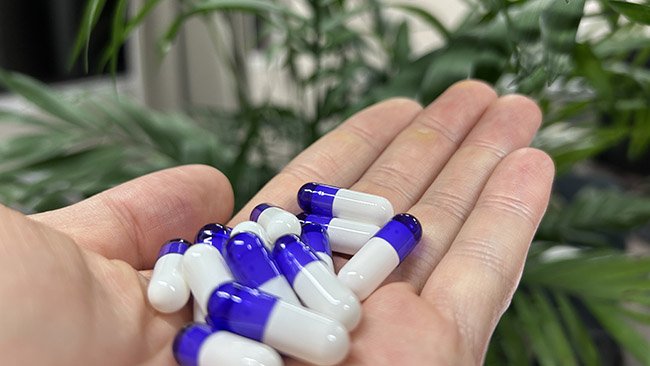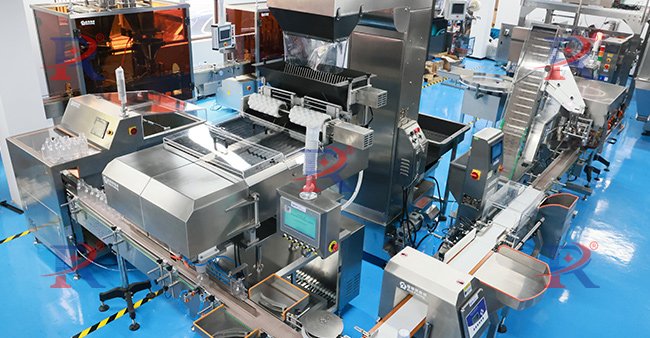1. Введение
Таблетки с кишечнорастворимой оболочкой стали неотъемлемой частью современных фармацевтических рецептур, особенно для лекарств, которым необходимо миновать кислую среду желудка. В производстве таблеток с кишечнорастворимой оболочкой решающую роль играет фармацевтическое оборудование, в частности, машины для нанесения покрытий на таблетки. В этом руководстве мы рассмотрим, что такое таблетки с кишечнорастворимой оболочкой, как они работают, какие методы нанесения покрытий используются в фармацевтической промышленности и какое оборудование необходимо для их производства.
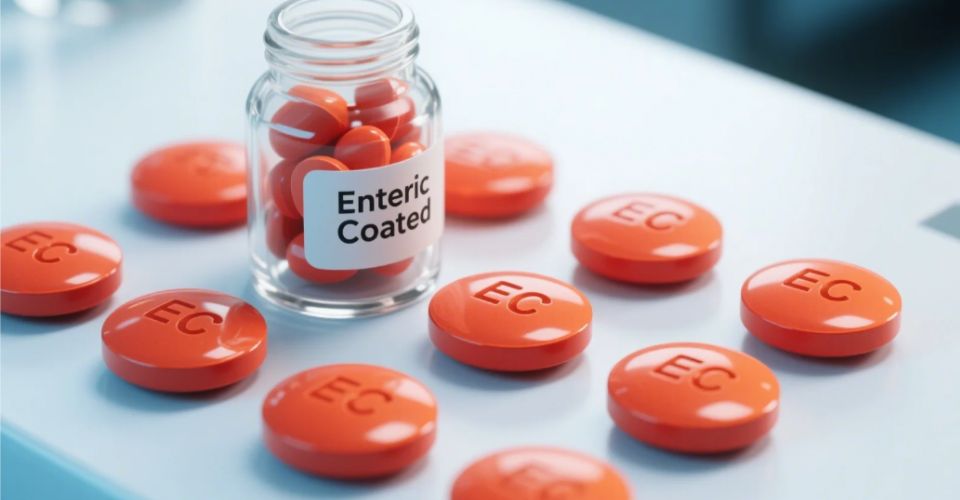
2. Что такое кишечнорастворимая оболочка?
Кишечнорастворимая оболочка — это защитный слой, наносимый на таблетки, капсулы или каплеты, который предотвращает их растворение в кислой среде желудка. Вместо этого, эта оболочка обеспечивает прохождение лекарства через желудок в неизменном виде и растворение только в более нейтральной или щелочной среде кишечника.
Кишечнорастворимые покрытия обычно изготавливаются из pH-чувствительных полимеров, которые сохраняют стабильность при низком pH (кислой среде), но разрушаются при более высоких значениях pH (обычно выше 5,5–7,0), характерных для тонкого кишечника. Кишечнорастворимые покрытия особенно полезны для:
• Защита активных ингредиентов, чувствительных к кислоте
• Предотвращение раздражения желудка, вызванного некоторыми лекарствами
• Нацеливание высвобождения препарата в кишечник для лучшего всасывания или терапевтического эффекта
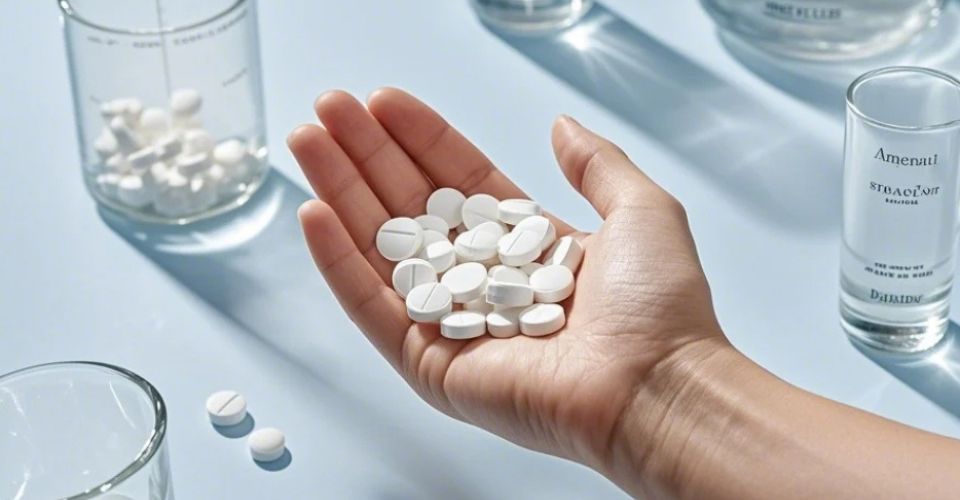
3. Как действуют таблетки, покрытые кишечнорастворимой оболочкой?
Таблетки, покрытые кишечнорастворимой оболочкой, работают благодаря специальному внешнему слою, который устойчив к кислой среде желудка, но растворяется в более нейтральной или щелочной среде кишечника. Вот как работает этот процесс пошагово:
- Прием внутрь: После проглатывания таблетки она попадает через пищевод в желудок.
- Кислотостойкость: Кишечнорастворимая оболочка остается нетронутой в желудке (рН 1,0–3,5), защищая активные ингредиенты от высвобождения или разрушения под действием желудочной кислоты.
- Транзит в кишечник: Таблетка попадает в тонкий кишечник, где pH постепенно повышается примерно до 6,5–7,5.
- Растворение покрытия: Кишечнорастворимая оболочка растворяется при более высоком уровне pH, что позволяет таблетке распадаться и высвобождать ее активный фармацевтический ингредиент (АФИ).
- Целенаправленное поглощение: Затем препарат всасывается в кишечнике и поступает либо для местного лечения (например, противовоспалительные препараты при заболеваниях кишечника), либо для системного кровообращения.
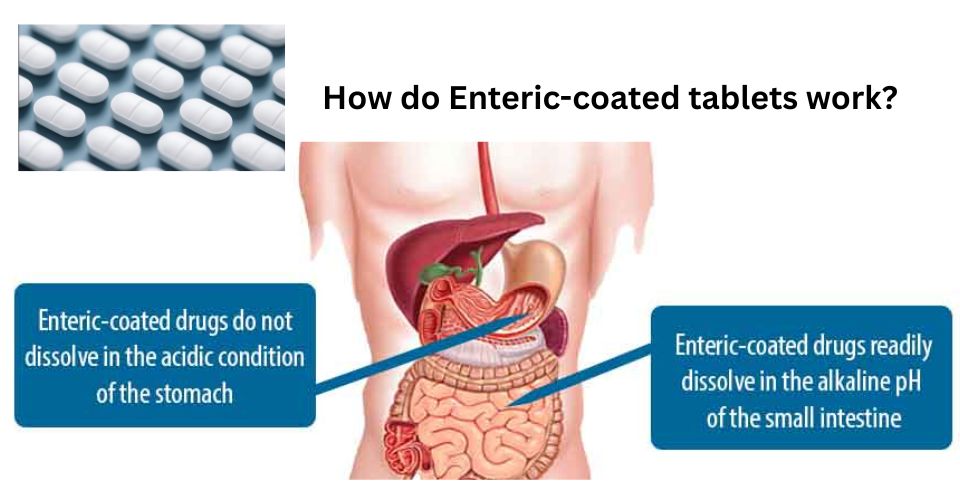
(Фото: https://www.pharmapproach.com/enteric-coating-2/)
4. Примеры кишечнорастворимых лекарственных средств и препаратов
Таблетки с кишечнорастворимой оболочкой широко используются как в рецептурных, так и в безрецептурных препаратах. В фармацевтической и нутрицевтической промышленности кишечнорастворимая оболочка применяется к различным лекарственным формам, включая таблетки и капсулы с кишечнорастворимой оболочкой. Каждая форма обладает различными преимуществами в зависимости от целей разработки, типа препарата и производственных предпочтений.
Обычный кишечнорастворимый Наркотики
Ниже приведены некоторые примеры таблеток с кишечнорастворимой оболочкой, которые чаще всего используются в различных категориях и по разным причинам.
Таблетки для | Категория | Зачем использовать кишечнорастворимую оболочку? |
Желудочный сок | Ингибитор протонного насоса | Защищает кислоточувствительные препараты; улучшает всасывание в кишечнике |
Желудочный | Противовоспалительное/НПВП | Уменьшает раздражение желудка; используется для здоровья сердца. |
Обезболивающее | Обезболивание/НПВП | Задерживает высвобождение для предотвращения язвы желудка |
Пробиотики | Добавка для здоровья кишечника | Пробиотики в кишечнорастворимой оболочке защищают живые культуры через желудочную кислоту |
Пищеварение | Пищеварительная ферментная терапия | Высвобождает ферменты в двенадцатиперстной кишке для пищеварения |
Таблетки с кишечнорастворимой оболочкой также выпускаются в различных формах, таких как таблетки или капсулы. Ниже представлена сравнительная таблица этих двух форм препаратов с кишечнорастворимой оболочкой.
Особенность | Таблетки в кишечнорастворимой оболочке | Каплеты в кишечнорастворимой оболочке |
Форма | Круглый или овальный | Продолговатый, обтекаемый |
Легкость глотания | Умеренный | Проще, чем таблетки |
Нанесение покрытия | Наносится с помощью пленочных или дражировочных машин | То же, что и таблетки |
Место роспуска | Кишечник (зависит от pH) | Кишечник |
Типичное использование | Рецептурные препараты, добавки | Мультивитамины, безрецептурные препараты |
Предпочтение к производству | Экономически эффективный, большой объем | Простота в обращении, меньше пыли |
5. Плюсы и минусы таблеток в кишечнорастворимой оболочке
Таблетки с кишечнорастворимой оболочкой широко используются в фармацевтической промышленности благодаря своей способности безопасно и эффективно доставлять активные ингредиенты. Однако, несмотря на то, что они предоставлять значительные преимущества, они также сопряжены с определенными трудностями в производстве и разработке.
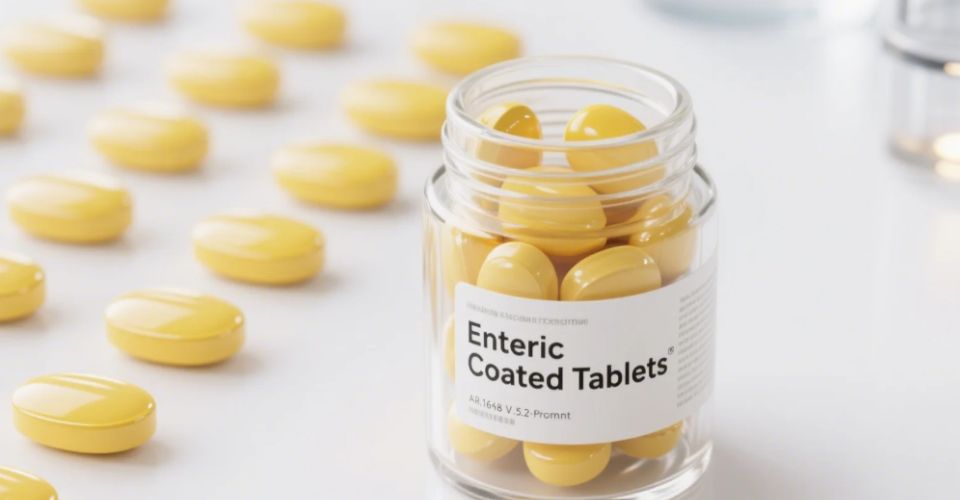
1) Преимущества кишечнорастворимой оболочки Таблетки
- Защита от желудочной кислоты
кишечнорастворимая оболочка является Разработаны таким образом, чтобы оставаться неизменными в кислой среде желудка и растворяться только при достижении более высокого pH в тонком кишечнике. Это идеально подходит для лекарств, которые могут быть дезактивированы или раздражены желудочной кислотой. - Улучшенный комфорт для пациентов
Такие препараты, как НПВП, могут раздражать слизистую оболочку желудка. Кишечнорастворимая оболочка помогает уменьшить побочные эффекты со стороны желудочно-кишечного тракта, улучшая приверженность пациентов лечению. - Целенаправленное высвобождение лекарств
Эти покрытия обеспечивают точечную доставку лекарств, что имеет решающее значение для препаратов, действующих локально в кишечнике или требующих отсроченного высвобождения в терапевтических целях. - Маскировка вкуса
Некоторые АФИ имеют горький или неприятный вкус. Кишечнорастворимые покрытия могут помочь замаскировать этот вкус, предотвращая растворение во рту или желудке.
2) Недостатки таблеток в кишечнорастворимой оболочке
- Комплексное производство Процесс
Нанесение кишечнорастворимых покрытий требует точного контроля материалов покрытия, температуры, скорости распыления и параметров сушки, часто требуя использования специализированных машин для нанесения покрытий на таблетки. - Более длительный срок производства
По сравнению с таблетками, покрытыми пленочной оболочкой, производство кишечнорастворимых препаратов обычно занимает больше времени из-за нескольких этапов нанесения слоев и контролируемых циклов сушки. - Риск неполного покрытия
Если процесс нанесения покрытия выполнен неравномерно или настройки аппарата нарушены, таблетка может частично раствориться в желудке, что лишит ее эффективности. - Чувствительность к хранению
Некоторые кишечнорастворимые полимеры чувствительны к влажности и температуре, что требует тщательной упаковки и условий хранения для сохранения целостности покрытия.
6. Кишечнорастворимая оболочка, пленочная оболочка и сахарная оболочка: в чем разница?
В производстве фармацевтических таблеток используются три основных метода покрытия таблеток: кишечнорастворимое, пленочное и сахарное. В чем же их различия?
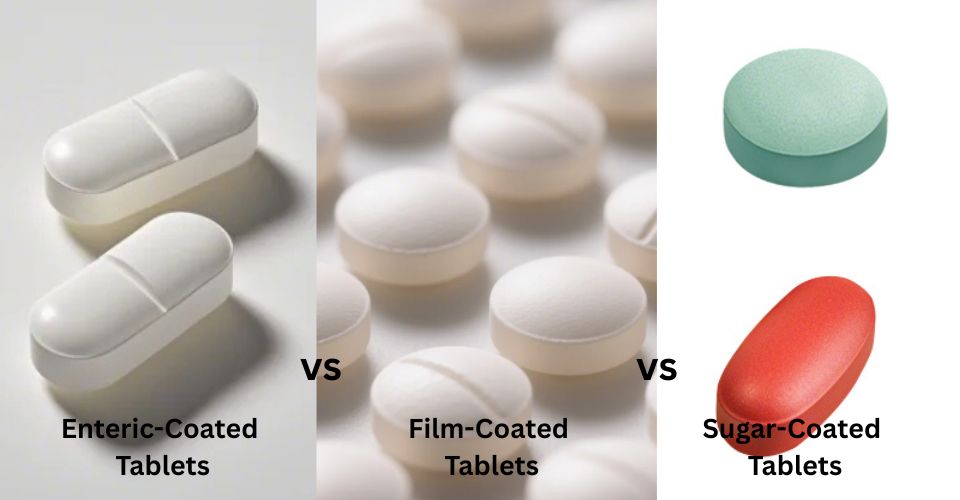
1) Различия в определениях и применении
- Кишечнорастворимое покрытие Это pH-чувствительное покрытие, позволяющее таблеткам растворяться в кишечнике, минуя желудок. Оно широко используется для кислоточувствительных препаратов или для уменьшения раздражения желудка.
- Пленочное покрытие Это тонкий полимерный слой, наносимый на таблетки для защиты от влаги, маскировки вкуса или улучшения внешнего вида. Он широко используется в фармацевтических препаратах и пищевых добавках благодаря своей эффективности.
- Сахарная глазурь Это традиционный метод, использующий слои на основе сахара для создания гладкой, глянцевой поверхности. Он улучшает вкус и внешний вид, но требует больше времени на производство и значительно увеличивает вес таблетки.
2) Кишечнорастворимая, пленочная и сахарная оболочка: ключевые различия
Особенность | Кишечнорастворимое покрытие | Пленочное покрытие | Сахарная глазурь |
Место выпуска | Кишечник | Желудочный или модифицированный выпуск | Желудок |
Толщина покрытия | Середина | Тонкий | Толстый |
Маскировка вкуса | Умеренный | Хороший | Отличный |
Скорость производства | Умеренный | Быстрый | Медленный |
Защита от влаги | Высокий | Высокий | Низкий |
Внешний вид | Функциональный | Цветной или прозрачный | Глянцевый, декоративный |
Вариант использования | Замедленное высвобождение, защита от кислот | Стандартные планшеты и брендинг | Жевательные таблетки, детские, травяные |
3) Кишечнорастворимая, пленочная и сахарная глазурь: оборудование и процесс нанесения покрытия
Все три покрытия основаны на машины для нанесения покрытий на таблетки, но параметры и продолжительность сильно различаются:
- Процесс нанесения энтеросолюбильного покрытия
Требует точного контроля распыления pH-чувствительного полимера, температуры сушки и нескольких этапов нанесения покрытия. Обычно используются перфорированные котлы или установки для нанесения покрытий в псевдоожиженном слое. - Процесс нанесения пленочного покрытия
Быстрее и эффективнее. Таблетки покрываются полимерным раствором и сушатся в камере для нанесения покрытия при контролируемом потоке воздуха и температуре. - Процесс покрытия сахаром
Этот метод требует много времени, включая нанесение нескольких слоёв сиропа, красителей и герметиков с использованием традиционных глазировочных котлов. Выполнение может занять несколько часов.
7. Основное фармацевтическое оборудование для нанесения покрытий на таблетки
Для нанесения кишечнорастворимого покрытия требуется фармацевтическое оборудование, такое как автоматические машины для нанесения покрытий на таблетки, которое обеспечивает равномерное и эффективное нанесение кишечнорастворимого слоя, что является ключом к функциональности таблетки и безопасности пациента. Ниже представлены основные типы фармацевтического оборудования, используемого для нанесения покрытий на таблетки, особенно в промышленных масштабах.
1) Автоматические машины для нанесения покрытий на таблетки
Автоматические машины для нанесения покрытий на таблетки являются основой крупномасштабного фармацевтического производства. Они используют передовые системы распыления, программируемое управление и контроль температуры для эффективного нанесения равномерного покрытия. Эти машины значительно снижают вариабельность покрытия, минимизируют отходы продукции и повышают производительность, что делает их идеальными для массового производства таблеток с кишечнорастворимой и пленочной оболочкой.
Рекомендуемая автоматическая машина для нанесения покрытий на таблетки: RD-BG-80
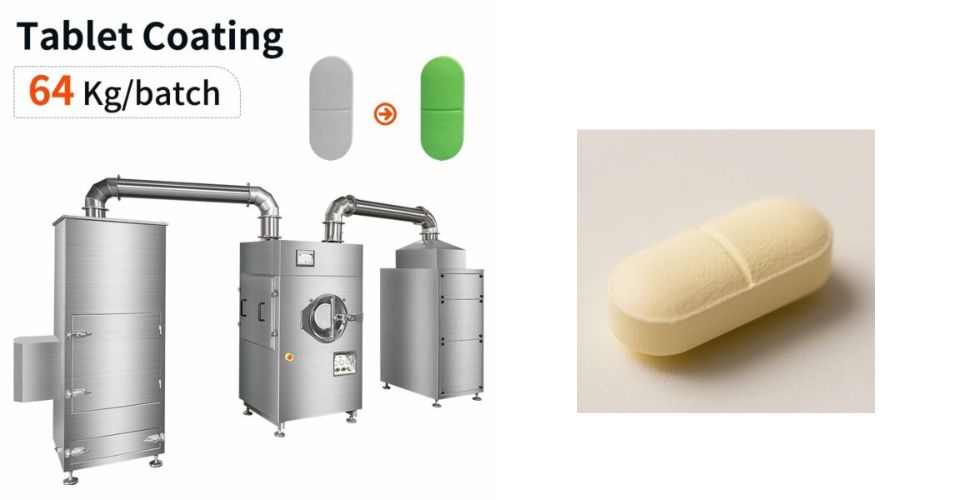
(Фото: www.ruidapacking.com)
По сравнению с другими моделями автоматических машин для нанесения покрытий на таблетки данная модель имеет следующие основные преимущества и особенности:
- Система распыления Ивата, Точность и последовательность: Во многих машинах для нанесения покрытий, представленных на рынке, используются простые распылительные форсунки, но в модели RD-BY-80 используются высококачественные форсунки Iwata, которые отличаются тонким распылением и равномерным покрытием, что позволяет сократить отходы материала покрытия и необходимость повторной обработки.
- Универсальность для различных типов покрытий: Некоторые модели оптимизированы только для нанесения пленочных или сахарных покрытий, но эта модель одинаково хорошо справляется с пленочными, сахарными и кишечнорастворимыми покрытиями, обеспечивая гибкость для различных линеек продуктов.
- Повышенная эффективность сушки: Использование перфорированного барабана со встроенной системой подачи горячего воздуха обеспечивает более быструю и равномерную сушку по сравнению со стандартными гладкими противнями, что сокращает время обработки и улучшает качество покрытия.
2) Перфорированные поддоны для нанесения покрытий
Перфорированные сковороды Широко используются для нанесения пленочных, сахарных и кишечнорастворимых покрытий. Таблетки загружаются во вращающийся перфорированный барабан, через отверстия которого циркулирует горячий воздух. Раствор для покрытия распыляется на вращающиеся таблетки, и теплый воздух быстро высушивает каждый слой. Этот метод обеспечивает равномерное покрытие и сохраняет целостность таблеток на протяжении всего процесса.
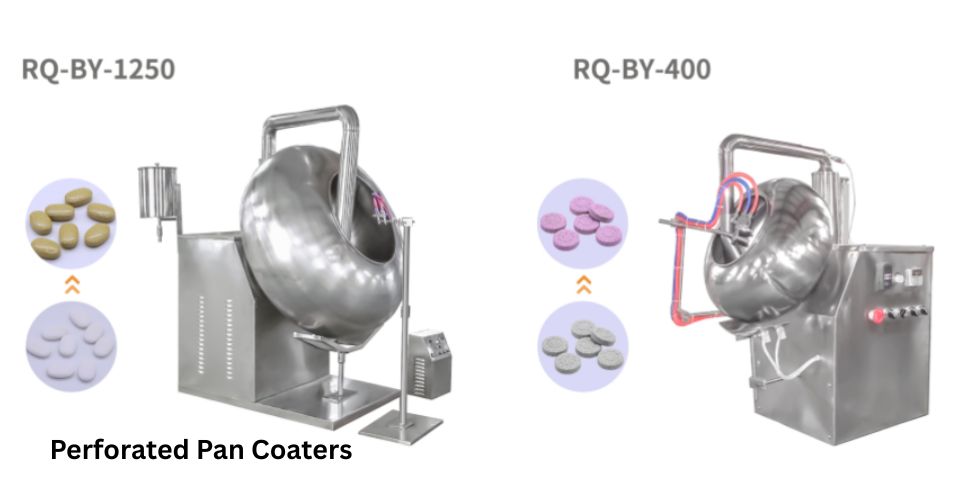
(Фото: www.richpacking020.com)
3) Установки для нанесения покрытий в псевдоожиженном слое
Установки для нанесения покрытий в псевдоожиженном слое предназначены для нанесения покрытий на небольшие таблетки, гранулы или пеллеты. В этой системе частицы взвешиваются в восходящем потоке воздуха, а материал покрытия распыляется снизу. Этот метод обеспечивает превосходную равномерность покрытия и особенно эффективен для продуктов, требующих многослойного нанесения или нанесения функциональных покрытий, например, с замедленным или пролонгированным высвобождением.
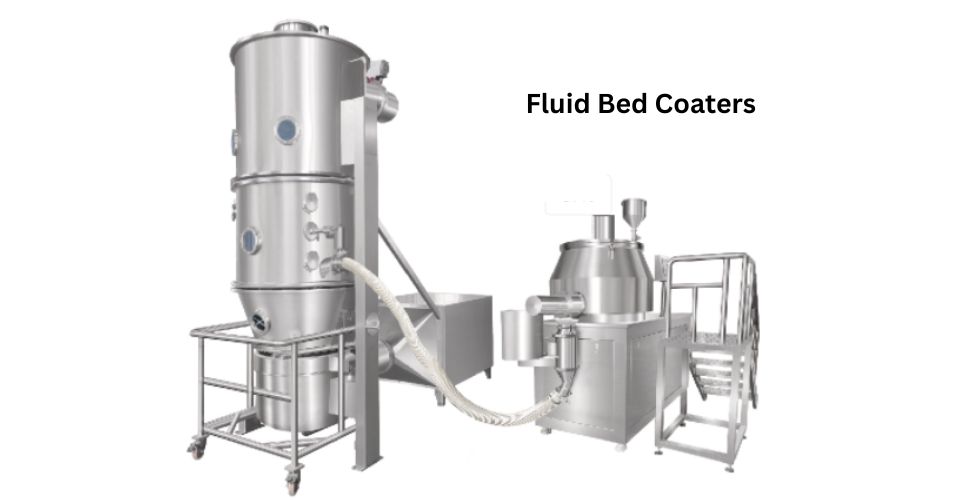
8. Часто задаваемые вопросы/Распространенные проблемы
Производители и специалисты по разработке рецептур часто сталкиваются с серьёзными трудностями и повторяющимися вопросами при работе с кишечнорастворимыми таблетками. Ниже приведены наиболее часто задаваемые вопросы и проблемы с точки зрения B2B, а также решения и советы экспертов.
В1: Почему кишечнорастворимая оболочка отслаивается или трескается в процессе производства?
Отслоение или растрескивание обычно указывают на проблемы с формулой покрытия или параметрами сушки. Неправильная концентрация полимера, чрезмерная механическая нагрузка или недостаточная сушка могут способствовать этому.
Решение:
- Оптимизировать вязкость раствора покрытия и содержание твердых веществ.
- Используйте прецизионно управляемую автоматическую машину для нанесения покрытий на таблетки с системой горячего воздуха.
- Избегайте перегрузки барабана и минимизируйте истирание таблеток.
В2: Как обеспечить одинаковую толщину покрытия на всех таблетках?
Неравномерное покрытие может привести к преждевременному растворению или задержке высвобождения.
Решение:
- Используйте автоматизированные пистолеты-распылители и системы мониторинга в режиме реального времени на окрасочных машинах.
- Обеспечьте однородный размер и форму таблеток с помощью роторного таблеточного пресса с жесткими допусками.
В3: Как избежать перекрестного загрязнения при производстве кишечнорастворимой оболочки?
Перекрестное загрязнение является тревожным сигналом, особенно на предприятиях, выпускающих много видов продукции.
Решение:
- Используйте оборудование с быстроочищающейся конструкцией и сегментированными маршрутами движения продукта.
- Внедрить СОП (стандартные рабочие процедуры) для очистки линии и проверить их с помощью мазковых тестов.
В4: Могут ли машины для нанесения кишечнорастворимых покрытий работать с несколькими типами покрытий (пленочными, сахарными и т. д.)?
Да, но только если машина поддерживает программируемые профили покрытия и сменные распылительные насадки.
Решение:
- Выбирайте универсальную машину для нанесения покрытий на таблетки с возможностью выполнения нескольких процессов.
- Работать с Производители фармацевтического оборудования, предоставляющие консультации и обучение по нанесению покрытий на таблетки.
9. Заключение
Таблетки с кишечнорастворимой оболочкой обеспечивают целевую доставку лекарственных средств и защищают чувствительные ингредиенты от воздействия желудочного сока. Они необходимы для многих современных рецептур. Для производителей фармацевтической продукции понимание типов покрытий и выбор правильного фармацевтического оборудования, например, машин для нанесения покрытий на таблетки, имеют ключевое значение для обеспечения качества продукции и соответствия требованиям. Благодаря правильному оборудованию и знаниям производство высококачественных таблеток с кишечнорастворимой оболочкой становится эффективным и надежным.
